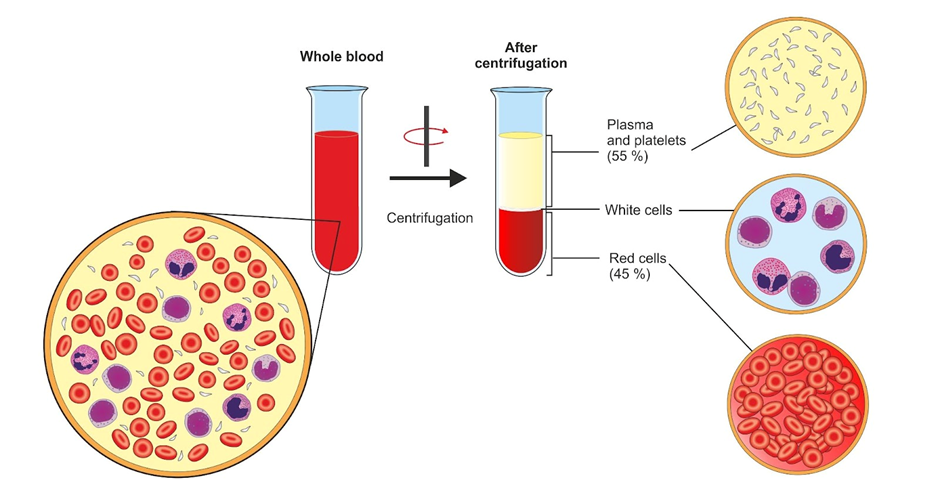What is serum?
Our blood is made of several components like plasma, Red blood cells, White blood cells and Platelets. Plasma is clear and yellowish fluid, which has numerous proteins, small nutrients, gases, electrolytes and metabolic waste products dissolved in it.
When we remove all the fibrinogen( a plasma protein) and clotting factors(Responsible for blood clotting) from the plasma it is named as serum in biology. Serum appears as a watery fluid, pale yellow in colour. Plasma proteins like albumin and globulin are present in serum except fibrinogen.

Also Read: What is transpiration in biology?
Study of Serum
Blood is a vital fluid connective tissue that circulates throughout the body, facilitating the transport of oxygen, nutrients, and metabolic wastes. It also plays a crucial role in regulating body temperature and pH levels by interacting with acids and bases.
Blood primarily consists of White Blood Cells (WBCs), Red Blood Cells (RBCs), serum, and plasma. Serum and plasma are integral components used in various blood tests, including blood group determination for patients.
The study of serum, known as serology, is essential in diagnostic medicine. Serum is utilized in numerous tests, including blood typing, to determine blood groups accurately. Measuring the concentration of various molecules in serum is valuable for applications like assessing the therapeutic index of drug candidates during clinical trials.
To obtain serum, a blood sample undergoes coagulation, where it clots naturally. Following this, the sample is centrifuged to separate out blood cells and clots, leaving behind the liquid supernatant known as serum. Serum's biochemical composition makes it invaluable in medical research, aiding in the study of disease mechanisms and the development of diagnostic tools and treatments. Its use extends to immunological assays and the evaluation of biochemical markers for health assessments.
Also Read: What is symmetry in biology?
Clinical and Laboratory Uses
Serum derived from convalescent patients who have successfully recovered from an infectious disease can serve as a potent biopharmaceutical for treating others afflicted by the same disease. The antibodies developed during recovery are effective combatants against the pathogen, making convalescent serum, or antiserum, a valuable form of immunotherapy.
In protein electrophoresis, serum's lack of fibrinogen is crucial as fibrinogen could otherwise lead to inaccurate results. This makes serum the preferred choice for ensuring the reliability of protein separation techniques.
Additionally, fetal bovine serum (FBS) is exceptionally rich in growth factors, making it a popular additive in the growth media used for eukaryotic cell cultures. Originally, embryonic stem cells were sustained using a combination of cytokine leukaemia inhibitory factor and FBS. However, concerns regarding variability between batches of FBS prompted the development of serum substitutes.
Read More: Assimilation